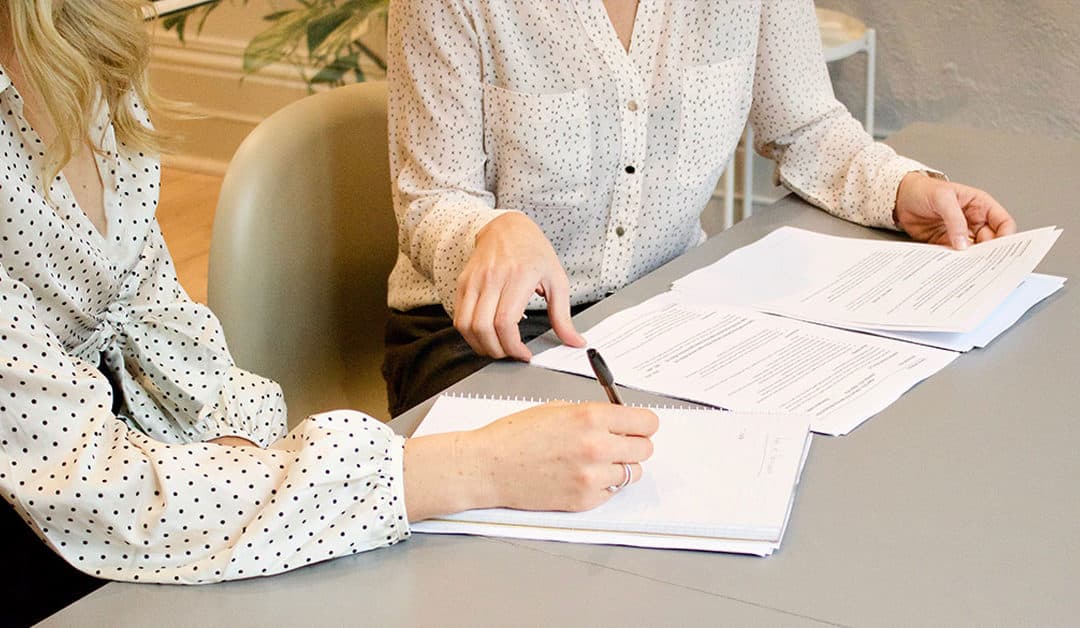This has been quite a year, to say the least. While many things have changed, one thing that hasn’t changed is that dentists are still actively transitioning their practices—in many markets, we are seeing even more buying and selling activity than we saw pre-pandemic. If you are considering buying a dental practice, the good news is that you still can, and the market remains strong for buyers. While other industries may be struggling for business loans, dental practices remain among the lowest for loan default rates (at around .03%) and lenders are still lending.
However—just like with everything else in 2020—there are both opportunities and changes of which you should be aware when considering a transition.
One of the changes we have noticed is a divergence among banks in their approach to dental practice lending. Sheryl Garfinkel of DDSmatch Mid-Atlantic, sums it up: “Every single bank is now widely different in their approach. If you call PNC, you’re going to get one method. If you call Lendeavor, it’s another method. If it’s B of A, it’s yet another method.”
Below we’ll address some of these changes, both to help you be prepared for the current landscape, and to help you navigate the next step in your dental career.
Why We’re Seeing Changes in Bank Lending
While it’s no surprise that banks would approach lending differently during the pandemic, it will be beneficial to understand why those changes are occurring. This way you can most easily plan for and adapt to the new reality of dental practice lending.
According to Dental Economics, Bank of America had over half of all dental practice loans, reporting over 20,000 loans. In the industry, they historically have been regarded as a reliable source of dental lending. In 2020, however, we have seen that Bank of America put the brakes on many practice loans. Dental Economics corroborates, explaining that this shift is largely the result of dental practices taking advantage of the bank’s offer to temporarily pause existing loan payments, as well as the number of dental practices that used Bank of America for PPP loans during the first peak of the crisis.
One Bank of America banker explained to Dental Economics that “This is not a fundamental shift in our view of the dental lending marketplace. We simply have to dedicate all our time to servicing the thousands of borrowers who had their loans on hold and ensure they have all the support they need to succeed after opening back up, including help with PPP [Paycheck Protection Program] loans.”
With a major player like Bank of America taking a pause from issuing new dental practice loans, one might erroneously conclude there is trouble in the dental industry if one didn’t understand the larger picture. This is not the case. In fact, as of November 2020, the ADA reported that dental practices are averaging 76% patient volume as compared to their pre-pandemic levels, and that “staffing in dental offices was at 90% of pre-pandemic levels and one-third of dental practices reported ‘business as usual’ in terms of patient volume.”
Above many industries, dentistry is showing itself to be robust and adaptable to new circumstances. This isn’t surprising, given that dentistry is well suited to make the practical changes necessary to assuage patient concerns and respond to state and local requirements for infection control.
The good news for those considering a transition is that not every lender has responded as Bank of America has, as they are not all subject to the same large-scale pandemic burdens. For example, Leandeavor, the second largest lender for dental practices, has taken the opposite approach, and is now ramping up operations and increasing their lending. Sean Simon, Lendeavor’s vice president of credit, told Dental Economics, “Our outlook on acquisitions, and more broadly, the dental industry, remained bullish even at the height of the shutdown. We expect practices to remain more resilient than nearly every other industry in small business during a post-COVID recession . . . The PPP program caused most banks to divert all available personnel to areas that would help support processing PPP applications. We didn’t have that same limitation.”
Our Advice: Be Patient
Since lenders are taking different approaches in their response to the pandemic circumstances, what a lender will want to see and how they will respond to your loan application will be different as well. This does not mean that you cannot get a loan to buy a practice or that the industry isn’t showing remarkable resilience. This does mean that it may require more time, and may require you to talk to more lenders than a doctor buying a dental practice in 2019.
Likewise, this event is providing the same opportunities every downturn brings to those ready to take advantage of the shift—it is simply a cycle where patience and persistence will be rewarded.
Todd Garfinkel of DDSmatch Mid-Atlantic reports that while the banks he is working with are taking different approaches—and some are clearly more risk-averse than others—they are all essentially looking for the same information.
“One bank is saying, ‘we want to look at the last 12 months from a financial point of view,’ which obviously takes into account three months the practices were closed. Well, that’s pretty conservative versus another bank that wants to look at 2019 and compare it month to month. They all want to see that the practice is back to closely what they were doing before.”
The key here is to not get discouraged simply because you get turned down by certain lenders. Sheryl Garfinkel told of an experience with one buyer who went out to three banks:
“He went to a local bank that was not experienced in dental lending. He went to Bank of America, which at the time was basically not lending. Then he went to one that looks at the rolling 12 month financials, taking the COVID shutdown months as part of those numbers…so he was not getting approved. So he concluded, ‘I guess I just can’t buy this practice.’ He was discouraged about the prospects because the bankers wouldn’t lend on the practice, but he didn’t understand the landscape. He wasn’t willing to call another lender that we knew would lend, as they are basing their analysis off of pre-COVID numbers.”
It’s very true that getting turned down is hard. Getting turned down three times is really hard. But this dentist’s experience is instructive. This environment may require more perseverance, but the choice opportunities remain for those willing to be patient.
Listen to your advisors, follow their advice, and don’t give up.

Be Prepared
In addition to patience, you need to be prepared for a little more scrutiny than banks were applying to dental practice loan applicants in 2019. Right now, banks are looking more closely at an applicant’s production ability, liquidity, and the overall global cash flow.
Todd explains, “Lenders are asking ‘How qualified is the buyer, and then, how qualified is the practice? And how do those come together?’ If a dentist who produces $300,000 a year is looking at buying a dental practice that produces $1,000,000—they are going to have a problem, because they can’t do the work. Banks will say, ‘You’re not going to be able to fulfill the numbers that were used to vet this practice.’
Lenders are also taking a loan applicant’s cash liquidity more into account. Todd reports, “Things have gotten a little bit tighter here. Banks had guidelines before, where they might say, ‘We need between five and ten percent liquidity in the bank,’—meaning they want that much cash relatively easily available to the buyer now. They don’t have to put this cash as a down payment, but simply show it is available to them if needed. In the past they might have been a little flexible about how much you needed exactly, and how easily you could access the funds in a pinch. However, now they’ll be very specific and have a more clear criteria, such as: ‘You need to have 10% liquidity.’”
Sheryl adds that another aspect “that shifted significantly” is the impact of the “Global Cash Flow,” on lending. “Global Cash Flow” is an analysis used by lenders to assess the cash flow of a business to get an overall picture of its ability to service the proposed debt over time. It is comprised of the dental practice earnings, its expenses (including the doctor’s and staff salaries), the practice loan as well as the buyer’s personal debt and its projected ability to a certain ratio leftover as a buffer. Essentially, global cash flow is a ratio of the number of times the financial obligations of a dental practice is covered by its earnings.
Historically, banks wanted to see a global cash flow ratio of 1:1.2 for dental practices, meaning if the buyer can meet all of their financial obligations, including the practice loan, and still have money left over. Todd currently reports that when working with lenders, “now it’s between 1:1.25 and 1:1.4.”
Every Bank is Doing Things Differently
Todd reports, “On a large picture, as we look at banks, the really surprising thing is that each one seems to be doing things slightly different than every other. Some are doing things a little bit more drastically different than others. This can range from ‘We’re using 12 months of financials rolling,’ which cuts right through the shutdown COVID months, to, ‘Hey, we’re doing business as usual and as long as everything seems in line, we’re fine. We just want to know a loose plan that the practice has for handling COVID and getting back to where they were pre-pandemic.’”
According to Todd, “These latter lenders in general are looking at month-over-month for 2019 versus 2020. They want to know how the practice is growing. They’d simply like it to be back to 80% – 85% of where they were pre-COVID, or possibly higher, depending on the bank. Some banks are looking at a production level. Most banks are looking at a collections level—the actual money they bring into the practice.”
While Bank of America isn’t lending like they used to, you may have better luck with a local or regional bank. Todd explains that “smaller banks are sometimes able to be more flexible, because of the level of personal relationships and the fact that, to them, your story matters—it’s not just numbers, numbers, numbers. Although, when it really comes down to it, the numbers do have to support the loan because they’re in the business of risk management.”
Sheryl adds, “The regional banks are also maybe a little bit more flexible over the local banks because, at that smaller scale, they probably aren’t familiar with dental lending.” She explains that often local banks simply don’t understand the standard financing structures that have become common in the dental industry, so regional or larger lenders are just more likely to have the knowledge and experience for dental lending.
Considering Buying a Dental Practice? DDSmatch Mid-Atlantic Has Available Practices
Todd and Sheryl Garfinkel of DDSmatch Mid-Atlantic are dental practice transition specialists with many years of experience and current practices available throughout Maryland, Virginia, and Washington, D.C.
For more information on our available practices, or should you have any questions about buying or selling a practice—we’re here for you! Simply contact us today!

